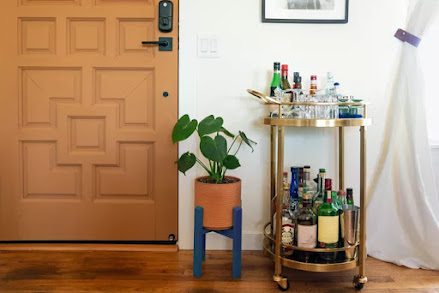The continued popularity of the Mid-Century Modern style is due to many factors. He gave us clean lines, soft organic curves, love for different materials and designers who are still idolized today.
What is Mid-Century Modern style?
The Bauhaus architects and designers who moved to America as a result of the economic changes in Germany after World War II started the design movement known as the Mid-Century Modern. It is characterized by simplicity and functionality.
While there is some disagreement about when this period began, it roughly spanned from the mid-1930s to the mid-1960s. However, the timeless quality of the style continues to appeal to today's homeowners.
Background and influence
This style grew up in America from earlier styles such as the Bauhaus, which originated in Germany, and the International Style, which grew out of the Bauhaus style in America.
Catastrophic events in the world, such as wars, uproot and destroy, but sometimes they can also create opportunities.
Like war, changes in the economy and technological progress also affect how we live, what we want and what we need. After World War II, the United States experienced urban expansion and suburbanization. Along with this came a demand for modern furniture for new, fast-paced modern homes, such as the Eichler homes built in California by Josef Eichler.
Technological advances have led to the production and development of a range of new materials, allowing for the exploration of new textures and effects, colors and even new shapes.
Distinctive features
The hallmarks of this style are a classic, understated look and clean lines with minimal fuss.
- Functionality is important as form follows function.
- Uncluttered and sleek lines with organic and geometric shapes
- minimal ornament
- Use of various traditional and non-traditional materials.
- Comparison of different and sometimes contrasting materials
Color and materials
New construction methods and new materials such as plastic had a significant impact on subsequent Mid-Century Modern designers. Plastic was used more for its own qualities than to imitate wooden furniture.
Traditional materials such as wood and non-traditional materials such as metal, glass, vinyl, plywood, plexiglass and lucite were widely used.
As for the Mid-Century Modern color scheme, the style allows for a wide range of hues, from neutrals to bold, as well as graphic use of black and white.
Mid-Century Modern Designers
There are several well-known designers who have worked in the Mid-Century Modern style, and the items they created continue to inspire the designers who came after them. Furniture items created according to their designs, as well as their copies, are in great demand.
In America, Herman Miller became synonymous with "modern" furniture and worked with George Nelson and Charles and Ray Eames. Knoll is another company known for its classic mid-century modern furniture.
Listed below are some of the more notable designers of this period. This is not a complete list:
- George Nelson
- Edward Wormley
- Eero Saarinen
- Harry Bertoia
- Arne Jacobsen
- Charles Eames and his wife Ray Eames
- Eileen Gray
- Isamu Noguchi
- Werner Panton
- Jens Reesom
- Alexander Girard
How to Decorate Your Interior in a Mid-Century Modern Style
As with any period, don't feel obligated to create a replica of those times, from architecture to furniture to landscaping. You can if you feel up to it, but many homeowners just getting started are intimidated by their favorite style. In addition, acquiring authentic items can be very expensive, although many of them are still being produced or revived due to demand.
Understand the distinctive features of the style and find things that repeat them. Iconic pieces from this era have been adapted and copied endlessly, and there's a chance you can find pieces that fit your lifestyle and budget, even if you don't want to spend a fortune on furniture.
Buying vintage furniture is one way to do this, and even if you decide to buy new, one big piece can usually set the tone. Build around it. It doesn't have to be a kit, but avoid too many patterns and stick to a color scheme, especially for wood.













